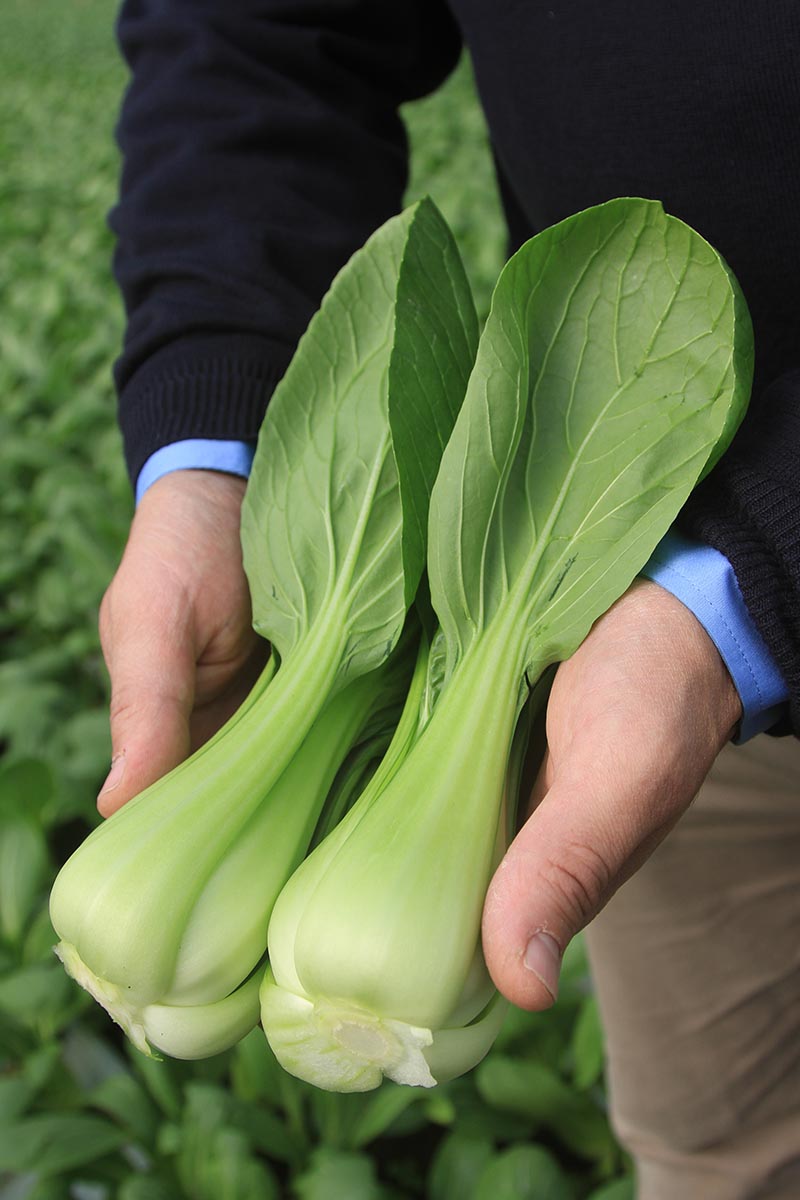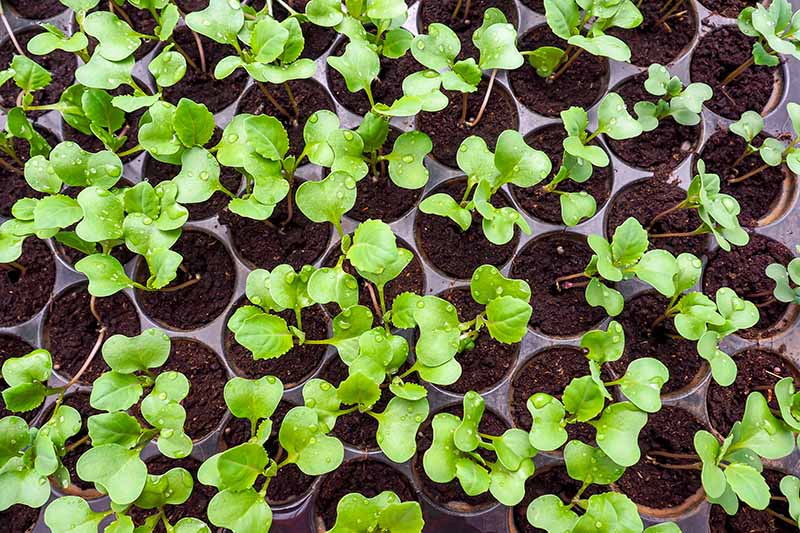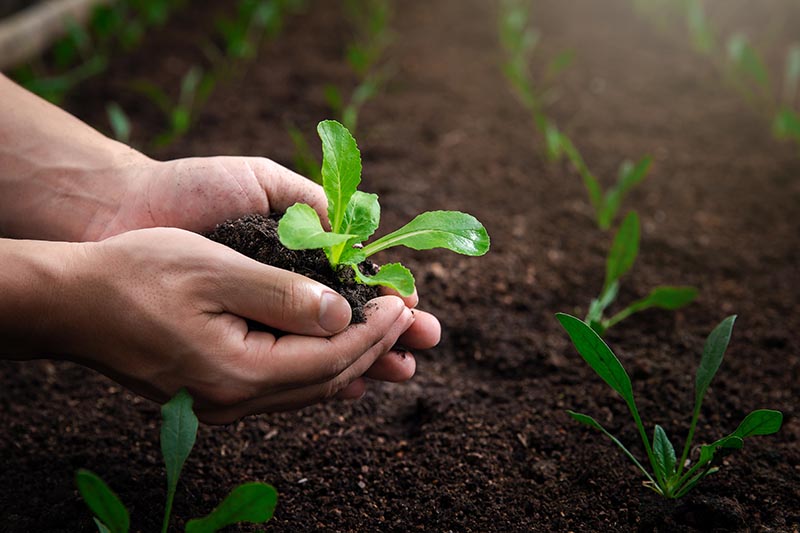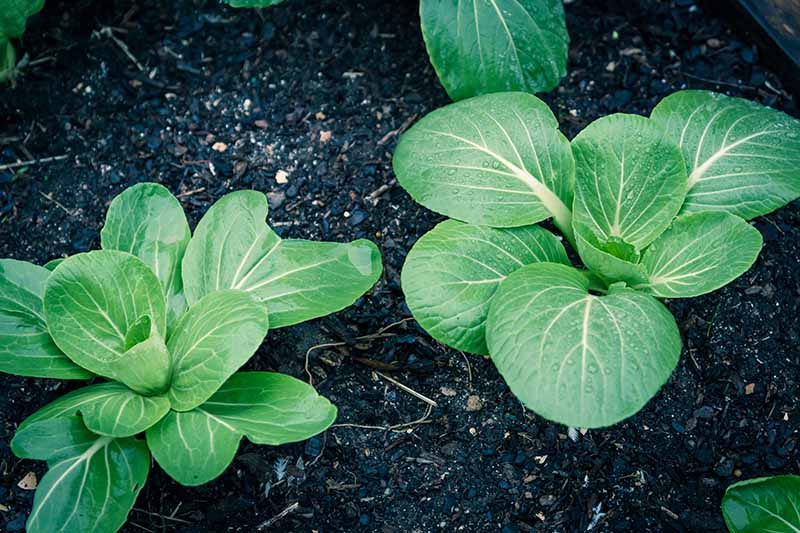There are dwarf types, called baby leaf bok choy, as well as full-size cultivars. These plants may have white stalks and crumpled dark green leaves, light green stalks with light green leaves, or light green stalks with purple leaves. We link to vendors to help you find relevant products. If you buy from one of our links, we may earn a commission. In this article, we zero in on the proper spacing of bok choy plants. Here’s what’s in store: This is easy. Let’s jump right in!
Spacing Essentials
Bok choy heights range from three- to four-inch baby leaf types to 24-inch full-size varieties. Plants require between three and 12 inches between them, depending upon the type, to accommodate mature widths. Talking about plant spacing reminds me of the movie Dirty Dancing, when Patrick Swayze is teaching Jennifer Grey to dance, and says, “Look, spaghetti arms. This is my dance space. This is your dance space. I don’t go into yours. You don’t go into mine. You gotta hold the frame.” Plants are a lot like those dancers. They need room to spread out and perform, without anyone or anything getting in their way. If you plant crops too close together, especially those of the same species, they will compete for nutrients, room to grow, and water. To determine sowing intervals, read seed packets, product tags, and catalog descriptions. Mature widths indicate how much space cultivars need. Foliage can touch, but it should not overlap with that of neighboring crops. Inadequate space promotes poor air circulation, a buildup of moisture, and vulnerability to slugs, snails, and fungal diseases. Intervals that are too wide are not suitable either, as they leave expanses of bare earth that are vulnerable to weed growth and insect infestation, adding to your garden labor. Let’s discuss spacing for seeds, transplanted seedlings, and container gardening next.
Sowing Seeds
Start seeds indoors about four to six weeks before your last average frost date. We delve deeper into bok choy planting times here. When selecting seed starting containers, consider biodegradable ones that can be placed in their entirety into the garden, minimizing transplant stress. Be sure to moisten the seed starting medium before sowing seeds about one inch apart, at a depth of one-quarter to one-half inch. Once the cotyledons – or seed leaves – sprout, thin them to one per seed starter cell, or one every three to five inches in open seed starter trays or containers. You may also direct sow seeds in the garden after the frost danger has passed. Place them an inch apart. When they are two inches tall, thin them to one every three to five inches for dwarf cultivars, and six to 12 inches for larger varieties. Allow 18 to 30 inches between outdoor rows, to make it easy to walk between them for chores like fertilizing, harvesting, watering, and weeding.
Transplanting Seedlings
When seedlings started indoors are about two inches tall, and the frost danger has passed, acclimate them to the outdoors a few hours a day for one week. Once used to the outdoors, they are ready for transplant to the garden. Read your seed packets or product tags to determine how wide your cultivars will grow to be at maturity. Place dwarf types three to six inches apart, and larger cultivars at six- to 12-inch intervals. Leave 18 to 30 inches between rows. These instructions apply to purchased nursery seedlings as well. Set them into the ground at the same depth they were in their starter containers, at the appropriate distances from each other.
Container Gardening
In addition to garden cultivation, you can grow bok choy in containers. Choose well-draining pots with a depth of six inches for dwarf cultivars, and eight to 10 inches for larger sized varieties. Fill them three-quarters full with a good all-purpose, moisture-retentive potting medium. Sow seeds a quarter to half an inch deep, or set seedlings at the same depth they were in their starter pots. Thin to a distance of three to five inches for baby leaf types and six to 12 inches for larger cultivars. Some folks sow more closely in containers. However, as I mentioned, crowding may cause poor airflow, moisture buildup, susceptibility to pests and disease pathogens, and competition for nutrients, space, and water. An exception to this is the cultivation of microgreens. As long as your pots are the recommended depth, you can snug things up a bit. Because you will be harvesting your leafy greens when they are miniature, they will never crowd one another, and the roots have ample room in the appropriate sized pot. You can place the dwarf baby leaf types as close as one inch apart, and full-size cultivars as close as six inches. You may find that a moisture meter, like this one from Arbico Organics, makes the job easier. Active Air 2-Way Moisture/pH Meter For both indoor and outdoor use, this meter requires no batteries. Simply set it to “Moisture” and insert three-quarters of the length of its probe into the potting medium to get your reading. Container gardening in a sunny spot is the perfect way for a small-space grower to enjoy homegrown bok choy. Get more tips on growing bok choy in containers.
A Stellar Performance
Whether you grow dwarf or full-size cultivars, or harvest microgreens or mature leafy stalks, having a good understanding of bok choy spacing will guide you in sowing seeds and transplanting seedlings. Now, it’s time to get gardening! Remember that like dancers, plants need their own space to spread out in, to perform nature’s brilliantly choreographed maturation process without impediment. Take the time to review the mature dimensions for your chosen varieties. Read up on square foot gardening for helpful design advice, and set the stage for a stellar garden production. Are you growing bok choy? Let us know in the comments section below! If you found this article informative, the following offer even more useful information on growing bok choy:
How to Regrow Bok Choy from ScrapsHow to Harvest Bok ChoyHow to Prevent Bok Choy from Bolting





